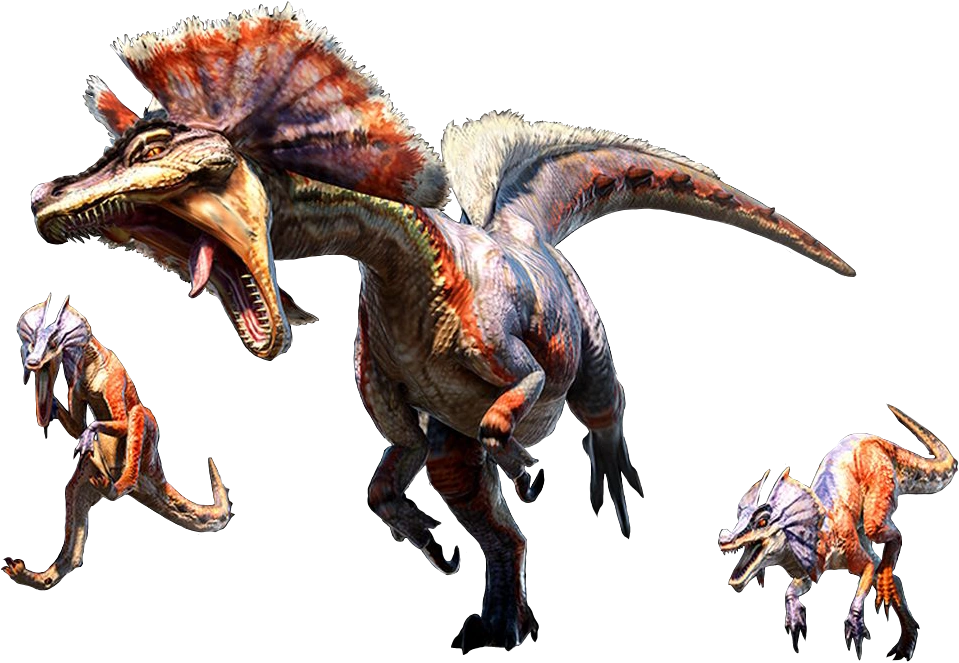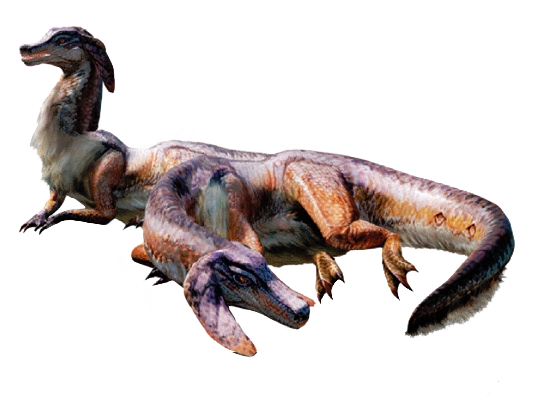 Social pack-hunting Bird Wyverns distinguished by their forwards-pointing cranial crests and predominantly grayish-blue hide and scales. They have some yellow scales on their flanks and tufts of fur on certain parts of their body such as their head, back and tail. Unlike the closely related Jaggi, their tails are fan-like and are designed to stun prey with a blow to the head. Females and immature males are known as Baggi, while mature males are known as Great Baggi. Being the leader of the pack, Great Baggi are much larger in size and have a more developed crest. As in the other species of social Bird Wyverns, each pack is only led by one alpha male and male Baggi are chased away when they mature to look for another pack to usurp.
Social pack-hunting Bird Wyverns distinguished by their forwards-pointing cranial crests and predominantly grayish-blue hide and scales. They have some yellow scales on their flanks and tufts of fur on certain parts of their body such as their head, back and tail. Unlike the closely related Jaggi, their tails are fan-like and are designed to stun prey with a blow to the head. Females and immature males are known as Baggi, while mature males are known as Great Baggi. Being the leader of the pack, Great Baggi are much larger in size and have a more developed crest. As in the other species of social Bird Wyverns, each pack is only led by one alpha male and male Baggi are chased away when they mature to look for another pack to usurp.Baggi and Great Baggi inhabit the freezing Tundra, where their blue hide and scales serve as camouflage and [their larger size compared to their close relatives help them retain heat.] Due to living in this harsher environment, they have also evolved to possess tougher hides than that of Jaggi and sacs that produce sedative compounds. When hunting, they will mix these compounds with their saliva and spit it onto their prey to put them to sleep before literally eating it alive. As food is harder to come by in their frigid arctic habitat, this adaptation to reduces the chances of prey escaping. To bring down their main prey of Popo, Baggi work cooperatively under vocal orders issued by the Great Baggi. They also feed on smaller Herbivores, Bullfango, Neopterons, Giggi and carrion scavenged from the kills of larger wyverns.
Being relatively low on the food chain, Baggi have to be vigilant against the larger monsters inhabiting the Tundra. Usually, their speed and agility coupled with their tranquilizing spit provide an effective defense. Adult Gigginox can turn the tables on the Baggi, as they are extremely protective of their Giggi offspring and will eat any Baggi wandering through the caves they inhabit.
As mentioned above, Baggi are closely related to Jaggi, as well as Wroggi.

